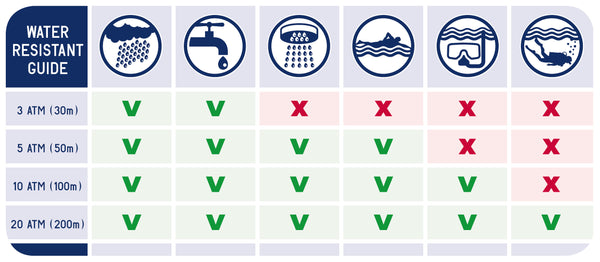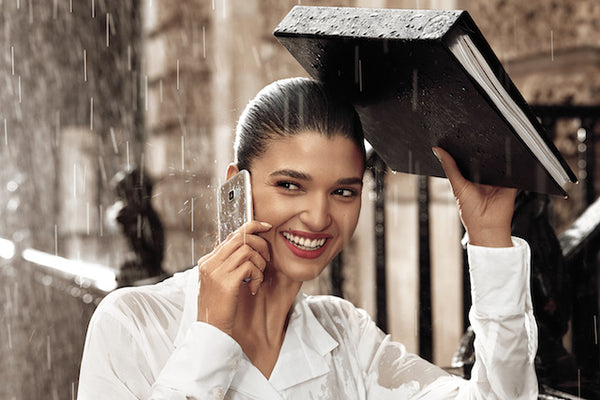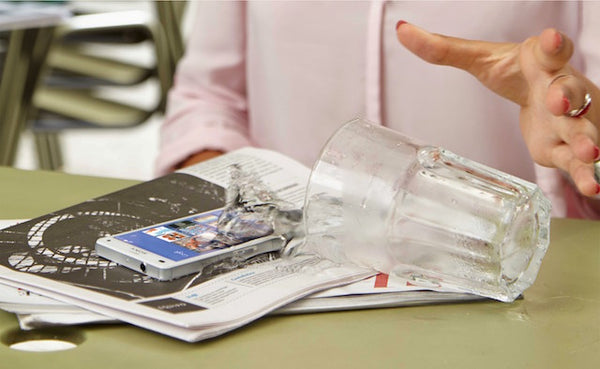Waterproof technology is widely used on different products and materials. How it works exactly?
I believe you've heard of waterproofed clothes, shoes, houses and electronic devices. But do you know what waterproofing technologies are used behind these products? Simply speaking, waterproof indicates an inability for water to get in touch with the waterproofed material. After reading this article, you will have more understanding on how waterproof technology are applied and what are the international standards.
There are two standards used to indicate under what kind of conditions the device will repel water: ATM and IP.

ATM: Used Mostly for Wearables
ATM stands for atmosphere. One atmosphere is roughly the ambient pressure exerted on you when you’re on the surface of water. Dive 10 meters below seawater and that’s two atmospheres, as the water’s pressure is added to the original ambient pressure. Every 10 meters adds another ATM.
Smartwatches and fitness bands usually mark their water resistance in ATMs. For example, a water resistance of 5 ATMs, means it can be used by recreational divers, or for swimming in a pool, or pretty much any activity within that limit. But there is one limit that isn’t explicitly stated on wearables: these devices are water-resistant only as long as the various seals remain in tact. You can’t press any buttons when submerged. It’s an issue with all water-resistant watches. You can’t do anything to break the seal, even if that action is how you would normally use your device. The second you break the seal, water will seep in.
IPX: Used Mostly for Electronics
Smartphones have standardized tests for water resistance that are set by the International Electrotechnical Commission (IEC). These are called International Protection or Ingress Protection codes, commonly denoted as IP followed by two digits. For example, the Samsung Galaxy S7 Edge has a rating of IP68. Lexuma X2O Waterproof Spray can provide IPX4 and IPX7 waterproof protection for electronics.

For IPX Rating, the first digit refers to dust protection, in which 6 is the highest rating. The second digit refers to water protection, in which 9 is the highest rating (but most waterproof smartphones are at 7 or 8).
Here’s a quick list of what each water resistance number indicates:
-
1: Dripping water has no effect.
-
2: Dripping water has no effect even when falling at an angle of 15 degrees from vertical.
-
3: Spraying water has no effect even when coming at an angle of 60 degrees from vertical.
-
4: Splashing water from any direction has no effect.
-
5: Water jets from a 6.3mm nozzle have no effect.
-
6: Water jets from a 12.5mm nozzle have no effect.
-
7: Submerging up to 1 meter for 30 minutes has no effect.
-
8: Submerging more than 1 meter for more than 30 minutes has no effect.
-
9: High temperature, high pressure water sprays have no effect.

Apart from waterproofing electronics, waterproof technology is also applied to other industries and daily life materials. This technology is actually all around us. Below is two major waterproofing examples:
Waterproof fabrics:
Waterproof fabrics are fabrics that are inherently, or have been treated to become, resistant to penetration by water and wetting. They are usually natural or synthetic fabrics that are laminated to or coated with a waterproofing material such as rubber, polyvinyl chloride (PVC), polyurethane (PU), silicone elastomer, fluoropolymers, and wax. Treatment could be either of the fabric during manufacture or of completed products after manufacture, for instance by a waterproofing spray.
Waterproof housing materials:
- Concrete materials such as concrete tile, pre-cast concrete, or latex or bituminous formed-in-place can be colored, polished, and sealed.
- Non-porous stone, slate, or cast stone with waterproof mortar.
- Clay tile, quarry tile, terrazzo, or ceramic tile.
- Rubber sheets or tiles.
As we can imagine, waterproofing technology plays an important role in our daily life. Not only shoes, clothes and housing, our electronics also need to be protected. Lexuma X2O waterproof spray is especially made for electronic devices and machinery. Get your belongings waterproof protected today!








![Lexuma XTag Apple Watch Portable Charger External Battery Power Bank [MFi certified] for Apple Watch Series 1 to 6](http://ru.gadgeticloud.com/cdn/shop/articles/VEATOOL_Wireless_earbuds_Bluetooth_5.0_earphones_with_wireless_charging_case__5.jpg?v=1605519336&width=800)
